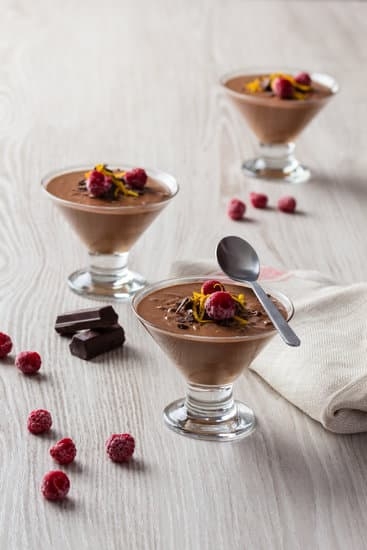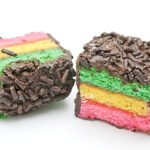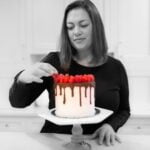Fondant has become a popular choice for cake decoration due to its smooth, polished finish and versatility in creating intricate designs. If you’re wondering how to use fondant to decorate a cake, you’ve come to the right place.
Fondant is a pliable sugar paste that can be rolled out into thin sheets and draped over cakes to create a flawless look. It is often preferred by bakers and decorators for its professional appearance and ability to hold shape well.
While there are different types of fondant available, such as rolled fondant and poured fondant, the basic principles of working with them remain the same. Rolled fondant is typically used for covering cakes, while poured fondant is more commonly used for filling or coating pastries. Knowing which type of fondant to use for your specific needs can help you achieve the desired result.
Before diving into the world of fondant decoration, it’s essential to have the right tools and materials on hand. From rolling pins and smoother tools to food coloring gels and flavor extracts, having a well-equipped workspace can make the process much smoother.
In the following sections, we will delve into the step-by-step process of preparing your cake for fondant decoration, coloring and flavoring your fondant, rolling it out smoothly onto your cake, creating intricate decorations, troubleshooting common issues, exploring advanced techniques, and tips for storing and transporting your beautifully decorated creation.
Types of Fondant
Fondant is a versatile and popular choice for decorating cakes due to its smooth, flawless finish and ability to hold intricate designs. When it comes to fondant, there are two main types to consider: rolled fondant and poured fondant. Rolled fondant is the most commonly used type and is made from sugar, water, gelatin, and glycerin.
It has a dough-like consistency and is rolled out with a rolling pin before being draped over the cake. On the other hand, poured fondant has a pourable consistency and is typically used for filling or glazing cakes.
When deciding between rolled fondant and poured fondant for your cake decorating project, consider the desired look and level of detail you want to achieve. Rolled fondants are ideal for covering large cake surfaces smoothly, creating sharp edges, and molding into shapes or decorations. Poured fondants are excellent for creating a glossy finish on pastries or petit fours or for filling cupcakes and other small treats.
Comparison of Rolled Fondant vs Poured Fondant
| Rolled Fondant | Poured Fondan |
|---|---|
| Made from sugar, water, gelatin, and glycerin. | Pourable consistency often used for filling or glazing cakes. |
| Ideal for covering large cake surfaces smoothly. | Creates a glossy finish on pastries or petit fours. |
| Can be molded into shapes or decorations. | Great for filling cupcakes and other small treats. |
Overall, both types of fondants have their own unique applications in cake decorating. By understanding the differences between rolled fondant and poured fondant, you can choose the best option to bring your creative vision to life when using fondants to decorate cakes.
Essential Tools and Materials Needed to Work With Fondant
Working with fondant to decorate cakes requires a few essential tools and materials to ensure the process goes smoothly and the end result looks professional. Here are some key items you will need to have on hand:
Rolling Pin
A rolling pin is crucial for rolling out the fondant to the desired thickness and size needed to cover the cake. A smooth, non-stick surface on the rolling pin will help prevent sticking and tearing.
Fondant Smoother
This tool is used to smooth out the fondant once it has been placed on the cake, creating a seamless finish. Fondant smoothers come in various shapes, but a basic paddle-shaped smoother is versatile and easy to use.
Sharp Knife or Pizza Cutter
A sharp knife or pizza cutter is essential for trimming excess fondant from around the base of the cake once it has been covered. This will give your cake a clean, professional look.
Cornstarch or Powdered Sugar
These powders are used to dust your work surface when rolling out fondant to prevent sticking. Make sure to use only a light dusting, as too much powder can dry out the fondant.
When equipped with these tools and materials, you will be ready to tackle any cake decorating project using fondant. With practice and patience, you will soon master how to use fondant to decorate cake like a pro.
Preparing the Cake for Fondant Decoration
Fondant is a versatile and popular choice for decorating cakes due to its smooth and professional finish. Before you can start working with fondant, it is essential to properly prepare the cake to ensure a flawless result. One of the crucial steps in this process is crumb coating the cake. Crumb coating involves applying a thin layer of frosting to seal in any loose crumbs, creating a smooth base for the fondant.
To crumb coat a cake, you will need:
- Cake leveler or serrated knife
- Offset spatula
- Buttercream frosting
Start by leveling your cake layers using a cake leveler or a serrated knife to ensure even surfaces. Place one layer of cake on a cake board or plate and spread a thin layer of buttercream frosting over the top. Place another layer of cake on top and repeat the process until all layers are stacked.
Then, apply a thin layer of frosting all around the sides and top of the cake to trap any loose crumbs. Chill the cake in the refrigerator for about 15-20 minutes to firm up the frosting before moving on to smoothing the surface.
Once your crumb coat has set, it’s time to smooth out any imperfections on the surface of the cake before covering it with fondant.
To smooth out the surface of your crumb-coated cake, you will need:
- Bench scraper or icing smoother
- Parchment paper or acetate sheets
- Fondant smoother tool
Gently run a bench scraper or icing smoother around the sides and top of the chilled cake to remove any excess frosting and create a level surface. For an extra-smooth finish, place parchment paper or acetate sheets against the sides and top of the cake while using your bench scraper to create sharp edges.
Use a fondant smoother tool to further refine and smooth out any remaining bumps or unevenness on the surface. Once your cake is perfectly smooth, it’s ready to be covered with fondant for decoration.
Coloring and Flavoring Fondant
Fondant is a versatile and popular choice for decorating cakes due to its smooth, polished finish that provides a professional look to any baked creation. When it comes to using fondant to decorate cakes, one essential aspect to consider is the coloring and flavoring of the fondant itself. By adding color and flavor to your fondant, you can customize your cake design to match any theme or taste preference.
To start, you will need gel food coloring in various shades to achieve vibrant colors without altering the consistency of the fondant. Gel colors are preferred over liquid ones as they are more concentrated and do not add excess moisture to the fondant, which could lead to a sticky mess.
Begin by adding small amounts of gel color with a toothpick or spatula and knead well until fully incorporated. Keep in mind that colors may deepen over time so it’s best to start with a lighter shade.
In addition to coloring, flavoring your fondant can elevate the taste of your cake design. Vanilla extract, almond extract, citrus zest, or flavored oils are commonly used to infuse the fondant with delicious flavors. When flavoring fondant, remember that a little goes a long way – start with a small amount and gradually add more until you achieve the desired taste.
It is crucial not to add too much liquid flavoring as it can alter the texture of the fondant, making it difficult to work with when covering the cake. Using flavored oils sparingly is recommended for intense flavors without causing any issues while decorating.
| Coloring Fondant Tips | Flavoring Fondant Tips |
|---|---|
| Use gel food coloring for vibrant colors | Start with small amount of flavoring |
| Add color gradually for desired shade | Avoid adding too much liquid flavoring |
| Knead well after adding color | Consider using flavored oils for intense taste |
Rolling Out and Covering the Cake With Fondant
Rolling out and covering a cake with fondant can seem like a daunting task, but with the right techniques and tools, you can achieve a smooth and flawless finish. Here is a step-by-step guide on how to use fondant to decorate your cake without any wrinkles or tears:
- Prepare your work surface by dusting it lightly with powdered sugar or cornstarch to prevent sticking.
- Knead the fondant until it is smooth and pliable. Roll it out into a circle that is slightly larger than the size of your cake.
- Carefully lift the rolled fondant onto your rolling pin and gently drape it over the top of your cake, starting from the center and working outwards to prevent air bubbles.
- Use a smoothing tool or your hands to gently press the fondant against the sides of the cake, smoothing out any wrinkles as you go along.
- Trim off any excess fondant at the bottom of the cake using a sharp knife or pizza cutter.
- If you encounter any tears or imperfections while covering the cake, don’t worry. You can easily patch them up by blending the edges together with a little bit of water or fondant glue.
By following these steps and taking your time to work carefully, you can achieve a beautifully covered cake with fondant that looks polished and professional. Experiment with different colors, flavors, and textures to create unique designs that will impress everyone at your next special occasion.
Creating Intricate Decorations
Fondant is a versatile and popular choice for decorating cakes due to its smooth finish and ability to create detailed designs. When it comes to creating intricate decorations with fondant, using molds, cutters, and shaping tools can make the process much easier and yield professional-looking results. Here are some techniques on how to use these tools effectively to elevate your cake decorating skills.
Utilizing Fondant Molds
Fondant molds come in a variety of shapes and sizes, allowing you to easily create specific designs such as flowers, leaves, or even intricate patterns. To use fondant molds, simply dust them with a bit of cornstarch or powdered sugar to prevent sticking. Press the fondant into the mold firmly, then carefully release it by gently flexing the mold. This technique is especially helpful for creating uniform decorations that can be repeated across the cake for a cohesive look.
Mastering Fondant Cutters
Fondant cutters are essential for achieving precise shapes and designs on your cake. From basic geometric shapes to intricate patterns, there is a wide range of cutters available to suit your decorative needs. When using fondant cutters, roll out your fondant evenly on a smooth surface with a rolling pin.
Press the cutter firmly into the fondant and then remove any excess around the shape before carefully lifting it off with a spatula. Experimenting with different sizes and shapes of cutters can add depth and dimension to your cake decorations.
Shaping Tools for Detail Work
Shaping tools such as ball tools, veining tools, and sculpting tools are invaluable for adding texture and detail to fondant decorations. Ball tools can be used to create realistic flower petals by thinning out the edges or adding veins for a lifelike appearance. Veining tools help simulate natural textures like leaves or wood grain by gently pressing into the fondant surface.
Sculpting tools are perfect for creating three-dimensional figures or sculpting details like faces or delicate features onto your creations. By mastering these shaping tools, you can take your fondant decorations to the next level with precision and artistry.
By incorporating fondant molds, cutters, and shaping tools into your cake decorating repertoire, you can enhance your designs with intricate details and professional finishes. Experiment with different techniques and tools to discover what works best for your personal style and creative vision. With practice and patience, you’ll soon become adept at using fondant to create stunning decorations that will impress guests at any special occasion or celebration.
Troubleshooting Common Fondant Issues
Fondant can be a versatile and beautiful medium for decorating cakes, but like any artistic endeavor, it can come with its fair share of challenges. From cracks to air bubbles, there are several common issues that may arise when working with fondant. However, with the right techniques and troubleshooting skills, these challenges can be overcome to create stunning cake designs.
One of the most common issues when working with fondant is cracks forming on the surface of the cake. This can happen due to a variety of reasons, such as rolling the fondant too thin or not kneading it properly before applying it to the cake.
To prevent cracks from forming, make sure to roll out the fondant evenly and smoothly before placing it on the cake. Additionally, knead the fondant well to ensure that it is pliable and free from air pockets.
Air bubbles are another frequent problem that can occur when using fondant to decorate cakes. These pesky bubbles can detract from the overall appearance of the cake and make it look unprofessional. To prevent air bubbles from forming, make sure to smooth out the fondant carefully after placing it on the cake.
Use a fondant smoother or your hands to gently press out any trapped air as you work your way around the cake. If air bubbles do appear, use a small pin to puncture them and then smooth out the surrounding area.
In addition to cracks and air bubbles, other challenges may arise when working with fondant such as tearing while rolling out or sticking too much to your work surface. These issues can be frustrating but with practice and patience, they can be easily managed. By following proper techniques for rolling out and applying fondant, as well as using tools like cornstarch or powdered sugar for dusting surfaces, you can minimize these challenges and create flawlessly decorated cakes every time.
Advanced Fondant Techniques
Fondant is a versatile material that allows for endless creativity when it comes to decorating cakes. Once you have mastered the basics of working with fondant, you can start exploring more advanced techniques to take your cake decorating skills to the next level. One of the most impressive ways to elevate your cake designs is by creating 3D figures using fondant. Whether it’s cute animals, intricate flowers, or lifelike characters, 3D figures add a wow factor to any cake.
To create 3D fondant figures, you will need to use a combination of sculpting tools, shaping molds, and your own artistic flair. Start by choosing a design or theme for your figure and sketching out a rough outline before you begin sculpting with fondant.
You can also use edible paint or food coloring pens to add details and bring your figure to life. Practice and patience are key when working on intricate 3D designs, so don’t be discouraged if your first attempts are not perfect.
Another advanced fondant technique that can add elegance and whimsy to your cakes is creating ruffles. Ruffles can be made by rolling thin strips of fondant and attaching them in layers around the cake or as cascading drapes on tiered cakes.
To achieve perfect ruffles, make sure your fondant is rolled out thinly and evenly, and use a sharp tool like a pizza cutter or knife to cut precise strips. Ruffling these strips with your fingers or a modeling tool will create beautiful waves and textures that enhance the visual appeal of your cake.
In addition to 3D figures and ruffles, there are countless other creative designs you can achieve with fondant. From intricate lace patterns and geometric shapes to delicate flowers and abstract art pieces, the only limit is your imagination.
Experiment with different tools, textures, colors, and techniques to push the boundaries of what can be done with fondant decorations on cakes. With practice and perseverance, you’ll soon become a master at using fondant to create stunning edible works of art that will impress any audience.
Conclusion
In conclusion, mastering the art of fondant decoration can truly elevate your cakes to stunning works of edible art. By understanding the different types of fondant, essential tools needed, and techniques for coloring, rolling out, and creating intricate decorations, you can achieve professional-looking results right in your own kitchen. Whether you choose rolled fondant or poured fondant, the key lies in practice, patience, and attention to detail.
When it comes to storing and transporting fondant-decorated cakes, there are a few important tips to keep in mind. It is best to store fondant-covered cakes in a cool, dry place away from direct sunlight to prevent colors from fading or bleeding. Additionally, when transporting your masterpiece, make sure the cake is kept level and secure to avoid any shifting or damage to the fondant decorations.
Remember that as with any new skill, learning how to use fondant to decorate cakes takes time and dedication. Don’t be discouraged by initial challenges or imperfections; instead, embrace them as opportunities for growth and improvement. With creativity, practice, and these helpful tips at hand, you’ll soon be creating beautifully decorated cakes that are sure to impress any audience.
Frequently Asked Questions
Can You Put Fondant Directly on a Cake?
Fondant can be put directly on a cake, but it’s important to properly prepare the cake first. Make sure the cake is smooth and level, then lightly brush with simple syrup or buttercream to help the fondant stick.
How Do You Put Fondant on a Cake for Beginners?
For beginners, putting fondant on a cake can seem daunting, but with practice it becomes easier. Start by rolling out the fondant evenly with powdered sugar to prevent sticking, then gently drape it over the cake and smooth out any air bubbles.
How Do You Attach Fondant Decorations to a Cake?
Attaching fondant decorations to a cake requires a little finesse but is easily achievable. Use water or edible glue sparingly as adhesive to stick decorations onto fondant-covered cakes. Be gentle when handling delicate decorations to avoid damage.

Welcome to our cake decorating blog! My name is Destiny Flores, and I am the proud owner of a cake decorating business named Cake Karma. Our mission is to provide delicious, beautiful cakes for all occasions. We specialize in creating custom cakes that are tailored specifically to each customer’s individual needs and tastes.





